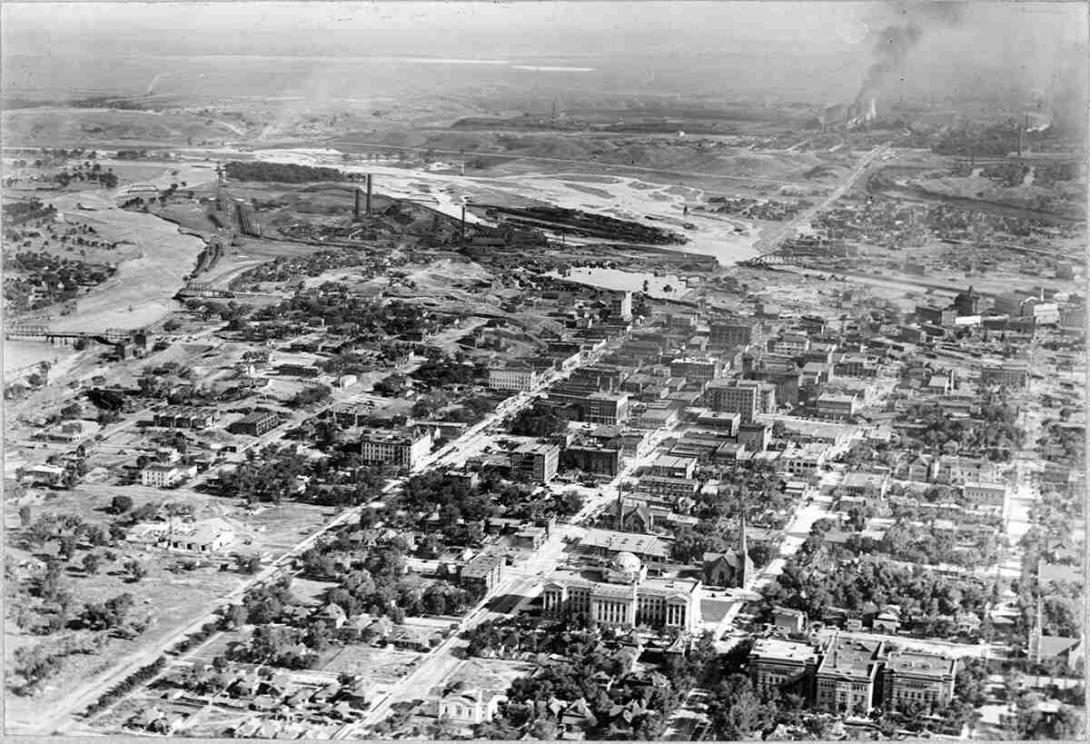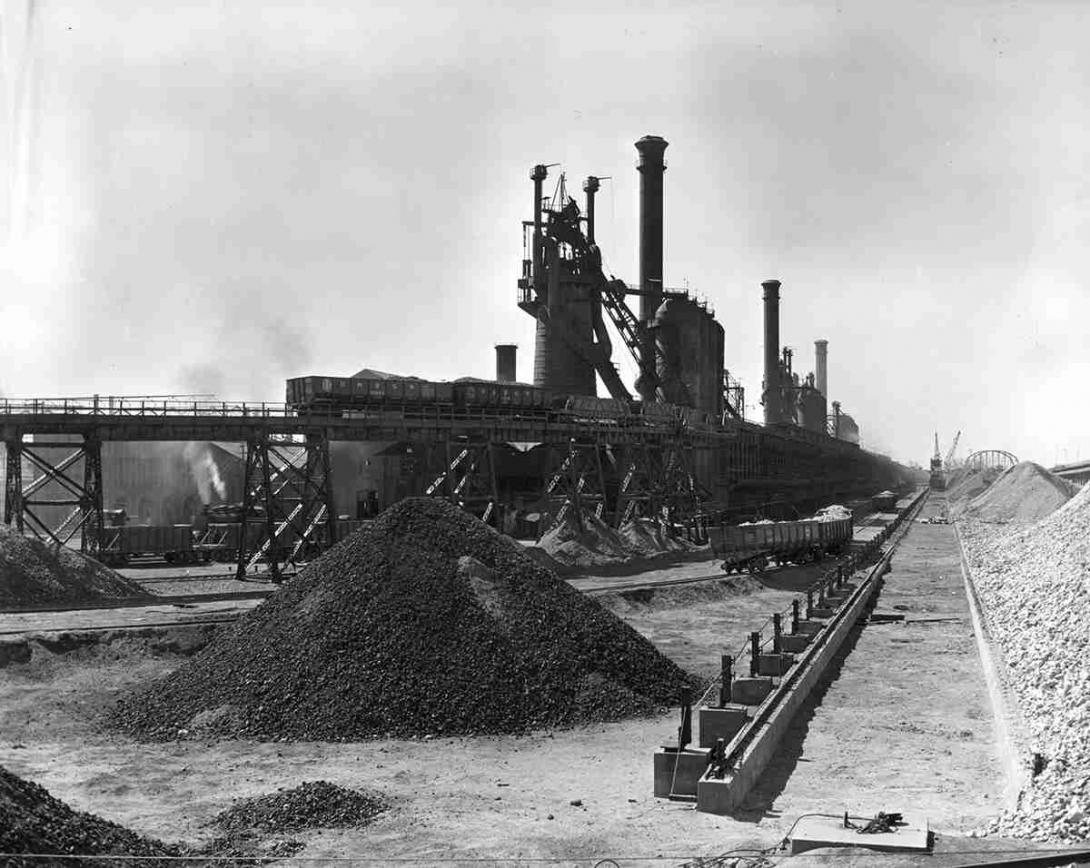Pueblo
Full Article
Pueblo is a city of approximately 110,000 people located near the confluence of Fountain Creek and the Arkansas River, along the Front Range of the Rocky Mountains. It is the county seat of Pueblo County, lying just off Interstate 25 about 100 miles north of New Mexico and 100 miles south of Denver. The terrain and climate are classified as high desert, though the city’s easy access to water makes this difficult to notice. Pueblo is often referred to as the “Steel City” or “The Pittsburgh of the West,” due to the steel mill on its south side. Pueblo is also known as the “Home of Heroes” because it has produced the most Congressional Medal of Honor winners per capita of any American city.
Pueblo is the home of the Colorado State Fairgrounds, the Colorado Mental Health Institute, and Colorado State University–Pueblo. Important tourist destinations include the Historic Arkansas River Project (or HARP, a river walk in downtown Pueblo) and the Pueblo Zoo. Cultural sites include the Sangre de Cristo Arts Center, the Steelworks Center of the West, the Southeastern Colorado Heritage Center, and Rawlings Library. Pueblo is also home of the world-famous Pueblo Chili, a mild green pepper that is celebrated with its own festival every September in downtown Pueblo.
Early Years
Prior to its development as an American trading post and city, the Pueblo area was frequented by Apache, Arapaho, Cheyenne, Comanche, Kiowa, Pawnee, and Ute people. The Spanish first assumed control over the land where Pueblo sits in 1521, but little occupation or settlement occurred until after Mexican independence in 1821. The international border between the United States and Mexico was initially the Arkansas River, which ran right through the area of present Pueblo. Trade with Mexico made Pueblo a hub of economic activity, best symbolized by the establishment of El Pueblo, a trading post, in 1842. The post was largely abandoned after attacks by Utes and Apaches in 1854.
The Colorado Gold Rush of 1858–59 and the people it brought to the area led to the platting of Pueblo and the neighboring community of Fountain City in 1860. Pueblo became the namesake of Pueblo County, organized as one of the original seventeen counties in Colorado Territory, which Congress established in 1861. The name “Pueblo” came from the name of the old trading post. The town was first platted in 1860 and replatted in 1870 following its organization in 1870.
The first driver of economic growth in Pueblo was the arrival of the railroad. William Jackson Palmer brought the Denver & Rio Grande Railroad to Pueblo in 1872, thereby connecting the city to the rest of the rapidly developing Front Range. Palmer hoped to extend the railroad all the way to Mexico; he even named the streets in South Pueblo after small towns in Mexico to emphasize that connection.
Pueblo officially became a city in 1873, when the census showed its population had topped 3,000. While Pueblo never rivaled Denver in size, it did compete with the capital in economic importance because of its proximity to the coal fields south of town.
The Denver & Rio Grande was an important force behind Pueblo’s industrial growth and eventual consolidation. Coal from the hinterlands of southern Colorado came through town on the railroad. When the Atchison, Topeka & Santa Fe Railroad reached Pueblo in 1876, regional agricultural products also began to move through town. Starting in the 1880s, smelters in Pueblo began to process ores mined in Leadville. With railroads and smelters linking it to productive mines and markets, Pueblo grew into an important industrial center during the late nineteenth century.
Peak Industrial Years
The opening of the steel mill in 1882 made it possible for Pueblo to become the city it is today. Making steel requires iron ore, limestone, and energy. William Jackson Palmer picked Pueblo as the site of the Colorado Coal & Iron Company (later renamed Colorado Fuel & Iron) because of its proximity to coal, limestone, and the Denver & Rio Grande Railroad. The original purpose of the steelworks was to manufacture rails for Palmer’s railroad. For most of its history, Pueblo’s coal operations were far bigger than its steel business, but the city reaped enormous economic and cultural benefits from both. Immigrants and domestic migrants flocked to Pueblo to work in the mill, making it one of Colorado’s most diverse cities. Irish, Italians, Germans, Slovenians, Serbs, Croats, Greeks, and Mexicans all worked and made homes there.
What were once three separate municipalities (Pueblo, Central Pueblo, and South Pueblo) merged to become Pueblo in 1886. Bessemer, still the name of the neighborhood closest to the steel mill, incorporated that same year. It joined Pueblo in 1894. Consolidation led to a building boom, especially along Union Avenue, which was located at the center of the city. The Mineral Palace, which opened in 1891, highlighted the city’s dependence on Colorado’s natural resources and highlighted Pueblo’s aspirations to play a role in the larger world. Underfunded from the beginning, the building would fall into disrepair and be torn down in 1942. Mineral Palace Park, however, remains on Pueblo’s near north side.
On September 25, 1919, President Woodrow Wilson gave his final public speech in Pueblo’s City Auditorium in support of the United States joining the League of Nations. It was the last stop of a long western tour, and Wilson collapsed from exhaustion in the city. On the way home, he suffered the first of a series of strokes that would leave him completely incapacitated until his death in 1924.
On June 3, 1921, flooding destroyed downtown Pueblo and killed hundreds of people. The waters also wrecked 600 homes and killed scores of livestock. Some 3,000 refugees had to live in tent colonies in the aftermath, but three years later the city had recovered.
The City of Pueblo benefited significantly from Franklin D. Roosevelt’s New Deal. It was a center of government activity to cope with the Dust Bowl, which affected farms on the edges of the city. In 1933 the city got its first higher education institution, Pueblo Junior College, the forerunner of both Pueblo Community College and Colorado State University–Pueblo. New Deal agencies built City Park and the Pueblo Zoo, and made significant improvements at the Colorado Mental Health Institute, at the Colorado State Fairgrounds, and in Mineral Palace Park.
After the turn of the twentieth century, Mexican and Mexican American labor played a particularly important role in the growth of Colorado Fuel and Iron (CF&I). Used largely as seasonal labor and kept in the worst conditions as a result, Mexican workers gave CF&I the flexibility it needed to meet the irregular demands of the steel market and the coal mines. When the mines and steelworks did not need them, many of these workers found work in the sugar beet fields in the northern part of the state.
The World War II years marked the height of Pueblo’s economic growth and overall economic significance. CF&I, already the largest private employer in the state, employed approximately 10,000 people in Pueblo alone. Other companies moved to Pueblo for the easy access to CF&I steel in order to create finished consumer products. The war also saw the opening of both the Pueblo Ordnance Depot (later renamed the Pueblo Army Depot) and the Pueblo Army Air Base in 1942.
The Modern Era
After World War II, Pueblo benefited from postwar prosperity. One sign of that prosperity was the development of the huge Belmont subdivision on the northeastern edge of town, constructed by builder John Bonforte. Retail developments such as the Midtown Shopping Center also date from this period and reflect the postwar trend toward automobile-oriented planning. The Pueblo Freeway, the forerunner of Pueblo’s section of Interstate 25, had been planned for many years before it opened in 1959. The Interstatea was unable reach completion with state and local funds, so the passage of the Interstate Highway Act of 1956 proved crucial to finishing it.
During the 1960s, Union Avenue underwent significant redevelopment so it could compete with suburban growth. While the funding of a local urban renewal authority had been defeated by voters earlier in the decade, a city-led urban renewal effort helped mitigate the visible signs of decline from the wartime boom years. In 1966 the city hired the preeminent shopping mall developer in the country, Victor Gruen, to plan the revitalization of the area. The actual efforts were more low-key. This included the building of the Sangre De Cristo Arts Center, which opened in 1972.
Any growing city in Colorado requires a reliable water source. The Frying Pan–Arkansas Project began in 1962 with a visit by President John F. Kennedy. It was finished in 1974. In addition to supplying water to Pueblo, the dam and reservoir to the west of town provides water to several cities along the Front Range and helps mitigate the area’s periodic flooding and drought. Pueblo continues to have a water surplus to this day, making it a rarity among Colorado communities.
The decline of the coal industry in southern Colorado began with the development of the oil industry in Texas during the 1920s. The steel industry itself collapsed during the 1980s, taking CF&I down with it and hurting Pueblo in the process. Oregon Steel bought the bankrupt CF&I in 1993 and the Russian firm Evraz bought Oregon Steel in 2006, but regardless of ownership the gradual automation of the steel mill meant that steelmaking would never mean as much to the city as it had in the past.
Besides the troubles at the steel mill, Pueblo’s economy had to face the downsizing and decentralization of the Colorado State Hospital. Schools closed as families left town for greener pastures. Passenger train service to Pueblo ended in 1967. Activity at the Army Depot peaked during the Vietnam War era and declined sharply during the 1970s. The government announced the closure of that facility in 1988. Its cleanup and repurposing are ongoing. Pueblo West, a planned community developed by McCulloch Properties West, opened to residents in 1969.
Pueblo Today
Pueblo’s industrial roots explain many of its unique qualities among Colorado cities. These include its racial and ethnic diversity, its often-difficult economic circumstances, and its reliance on government funding to keep its economy growing. Even today, Pueblo depends largely on governmental organizations to provide jobs for many of its citizens. Its largest employers include the Colorado Mental Health Institute at Pueblo, the local school district, and Colorado State University–Pueblo.
Pueblo has always been a city of neighborhoods. Those neighborhoods—like Salt Creek or Bojon Town—began as reflections of the city’s ethnic and racial diversity and remain so to a great extent. Its neighborhoods are far less segregated than they once were, and the city remains one of the most diverse communities in Colorado. The contributions of the community’s Chicano heritage, visible in everything from the food to the architecture, are what separates the city from its East Coast industrial counterparts.
Despite recurring economic difficulties, the population of Pueblo never significantly dropped during the worst of times, and it has grown slightly in recent years. It has a lower cost of living and cheaper real estate than almost anywhere else in Colorado. Responding to such incentives, Trane opened manufacturing and support facilities for its heating and air-conditioning equipment in Pueblo in 1987. Vestas, a Danish manufacturer, now builds wind turbines in Pueblo, and smaller energy companies have begun to follow suit. Pueblo’s new, poststeel economy is gradually coming into view.


















